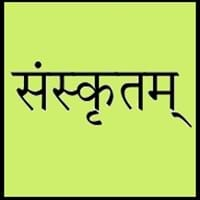Sanskrit vs Japanese
National Language
India
Japan
Second Language
Not spoken in any of the countries
Not spoken in any of the countries
Speaking Continents
Asia
Asia, Pacific
Minority Language
Not spoken in any of the countries
Palau
Regulated By
Not Available
Agency for Cultural Affairs (文化庁) at the Ministry of Education
Interesting Facts
- Sanskrit language has highest number of vocabularies than any other language.
- Sanskrit Language has proved to help in speech therapy, also it increases concentration and helps to learn maths and science better.
- In Japanese Language, there are 4 different ways to address people: kun, chan, san and sama.
- There are many words in Japanese language which end with vowel letter, which determines the structure and rhythm of Japanese.
Similar To
Old German Language
Korean Language
Derived From
Prakrit Language
Not Available
Alphabets in
Sanskrit-Alphabets.jpg#200
Japanese-Alphabets.jpg#200
Writing Direction
Left-To-Right, Horizontal
Left-To-Right, Horizontal, Top-To-Bottom
Hello
नमस्कारः (namaskāraḥ)
こんにちは (Kon'nichiwa)
Thank You
धन्यवादाः (dhanyawādāh)
ありがとう (Arigatō)
How Are You?
कथमस्ति भवान् (kathamasti bhawān)
お元気ですか (O genki desu ka?)
Good Night
शुभरात्री (shubharātrī)
おやすみなさい (Oyasuminasai)
Good Evening
शुभः सायंकालः
こんばんは (Konbanwa)
Good Afternoon
शुभ दुपार
こんにちは (Konnichiwa!)
Good Morning
सुप्रभातम् (suprabhātam)
おはよう (Ohayō)
Please
कृपया (kripayā)
お願いします (Onegaishimasu)
Sorry
कृपया क्षम्यताम् (kripayā kshamyatām)
ごめんなさい (Gomen'nasai)
Bye
पुनः मिलामः(punah milamah)
さようなら (Sayōnara)
I Love You
त्वामनुरजामि (twāmanurajāmi)
愛しています (Aishiteimasu)
Excuse Me
कृपया क्षम्यताम् (kripayā kshamyatām)
すみません (Sumimasen)
Dialect 1
Not present
Sanuki
Where They Speak
Not Available
Kagawa
How Many People Speak
Not Available
Dialect 2
Not present
Hakata
Where They Speak
Not Available
Fukuoka
Dialect 3
Not present
Kansai
Where They Speak
Not Available
kansai
Speaking Population
Not Available
Native Name
संस्कृतम् (saṃskṛtam)
日本語
Alternative Names
Not Available
Not Available
French Name
sanskrit
japonais
German Name
Sanskrit
Japanisch
Pronunciation
[səmskr̩t̪əm]
/nihoɴɡo/: [nihõŋɡo], [nihõŋŋo]
Ethnicity
Not Available
Japanese (Yamato)
Language Family
Indo-European Family
Japonic Family
Subgroup
Indo-Iranian
Not Available
Branch
Indic
Not Available
Early Forms
Vedic Sanskrit
Old Japanese, Early Middle Japanese, Late Middle Japanese and Early Modern Japanese
Standard Forms
Sanskrit
Japanese
Language Position
Not Available
Signed Forms
Not Available
Signed Japanese
Scope
Individual
Individual
ISO 639 6
Not Available
Not Available
Glottocode
sans1269
nucl1643
Linguasphere
No data available
45-CAA-a
Language Type
Ancient
Living
Language Linguistic Typology
Subject-Object-Verb
Subject-Object-Verb
Language Morphological Typology
Synthetic
Agglutinative, Synthetic
Sanskrit and Japanese Language History
Comparison of Sanskrit vs Japanese language history gives us differences between origin of Sanskrit and Japanese language. History of Sanskrit language states that this language originated in 2000 B.C. whereas history of Japanese language states that this language originated in 1185. Family of the language also forms a part of history of that language. More on language families of these languages can be found out on Sanskrit and Japanese Language History.
Sanskrit and Japanese Greetings
People around the world use different languages to interact with each other. Even if we cannot communicate fluently in any language, it will always be beneficial to know about some of the common greetings or phrases from that language. This is where Sanskrit and Japanese greetings helps you to understand basic phrases in Sanskrit and Japanese language. Sanskrit word for "Hello" is नमस्कारः (namaskāraḥ) or Japanese word for "Thank You" is ありがとう (Arigatō). Find more of such common Sanskrit Greetings and Japanese Greetings. These greetings will help you to be more confident when conversing with natives that speak these languages.
Sanskrit vs Japanese Difficulty
The Sanskrit vs Japanese difficulty level basically depends on the number of Sanskrit Alphabets and Japanese Alphabets. Also the number of vowels and consonants in the language plays an important role in deciding the difficulty level of that language. The important points to be considered when we compare Sanskrit and Japanese are the origin, speaking countries, language family, different greetings, speaking population of these languages. Want to know in Sanskrit and Japanese, which language is harder to learn? Time required to learn Sanskrit is 20 weeks while to learn Japanese time required is 88 weeks.





